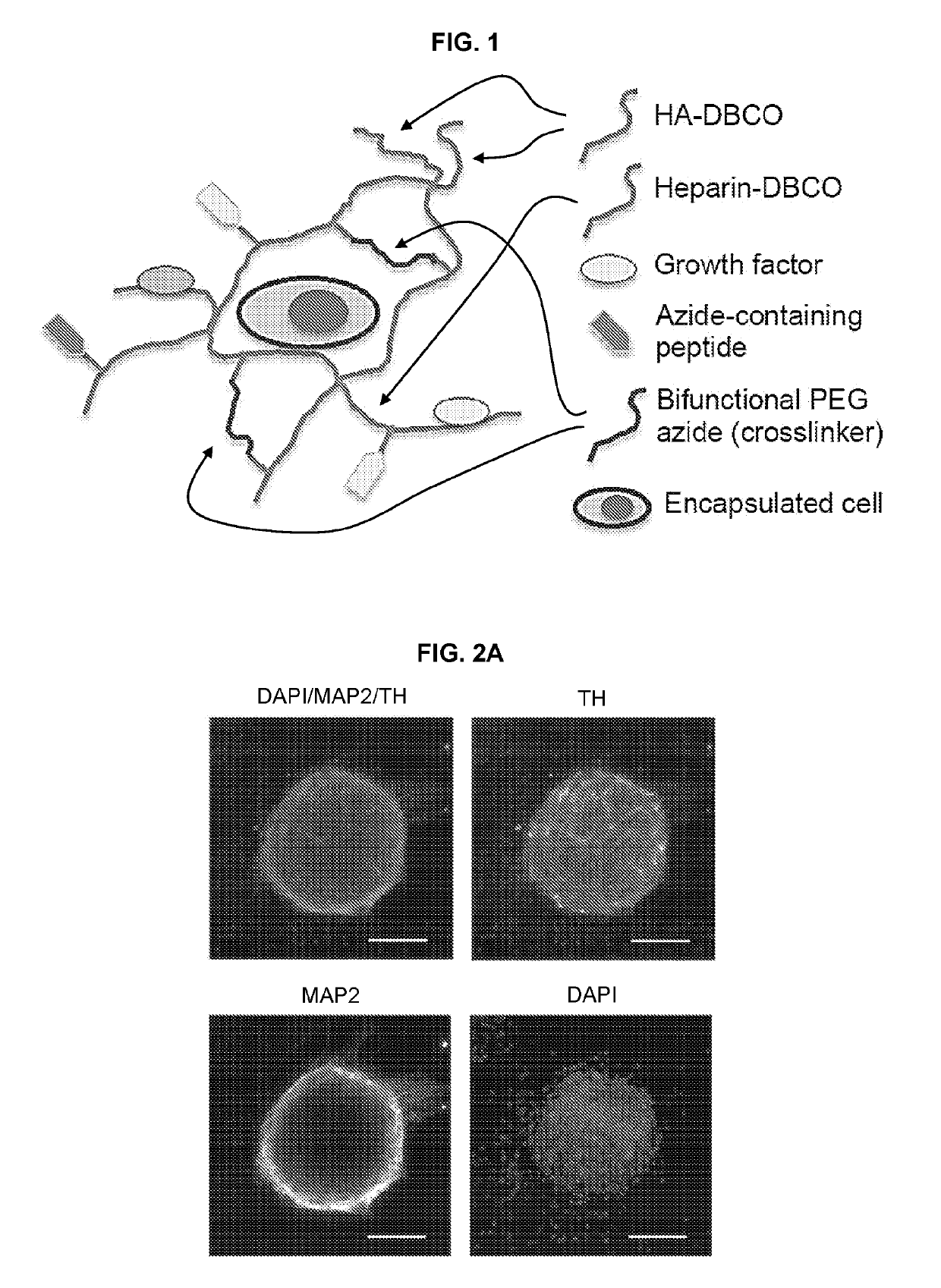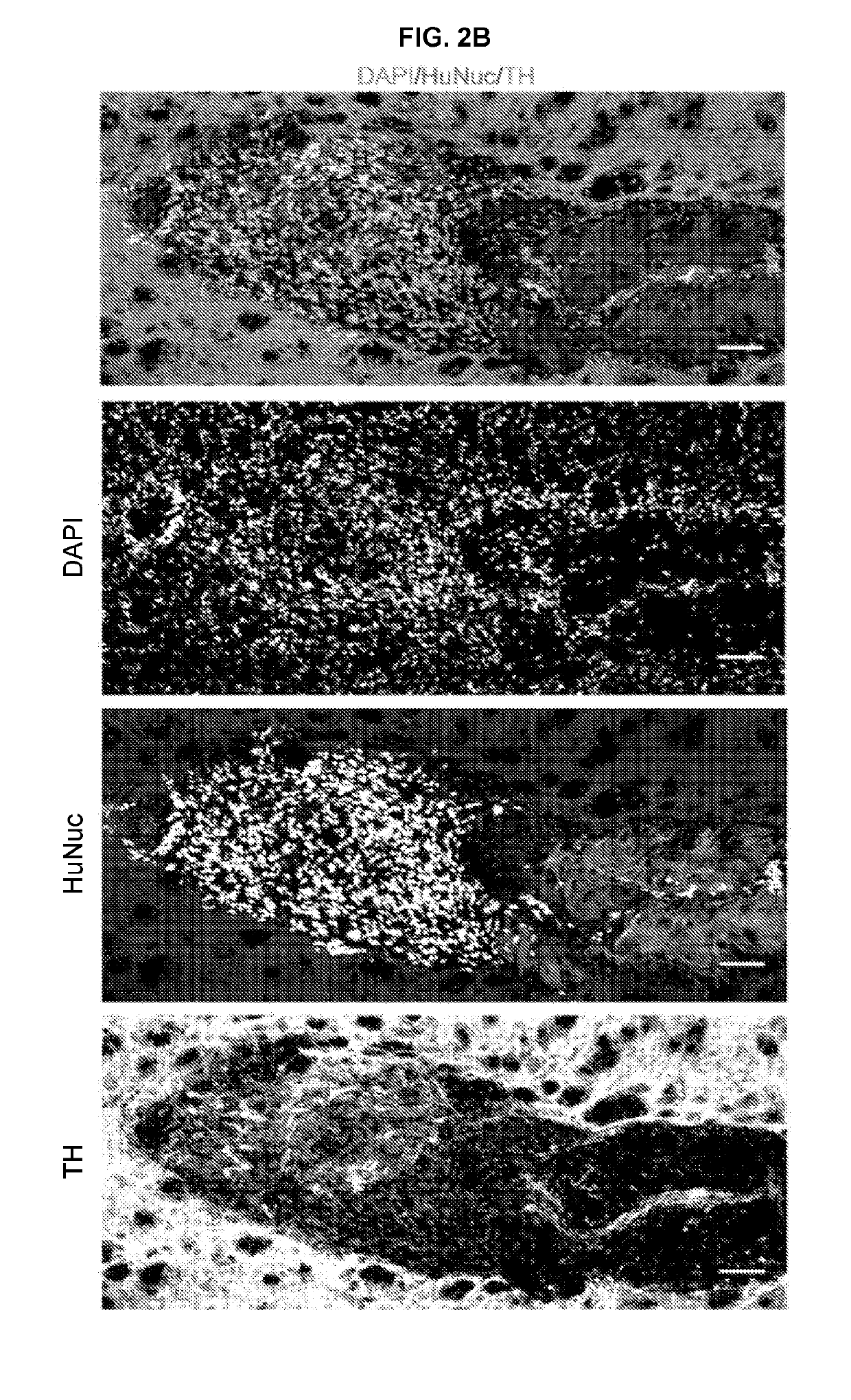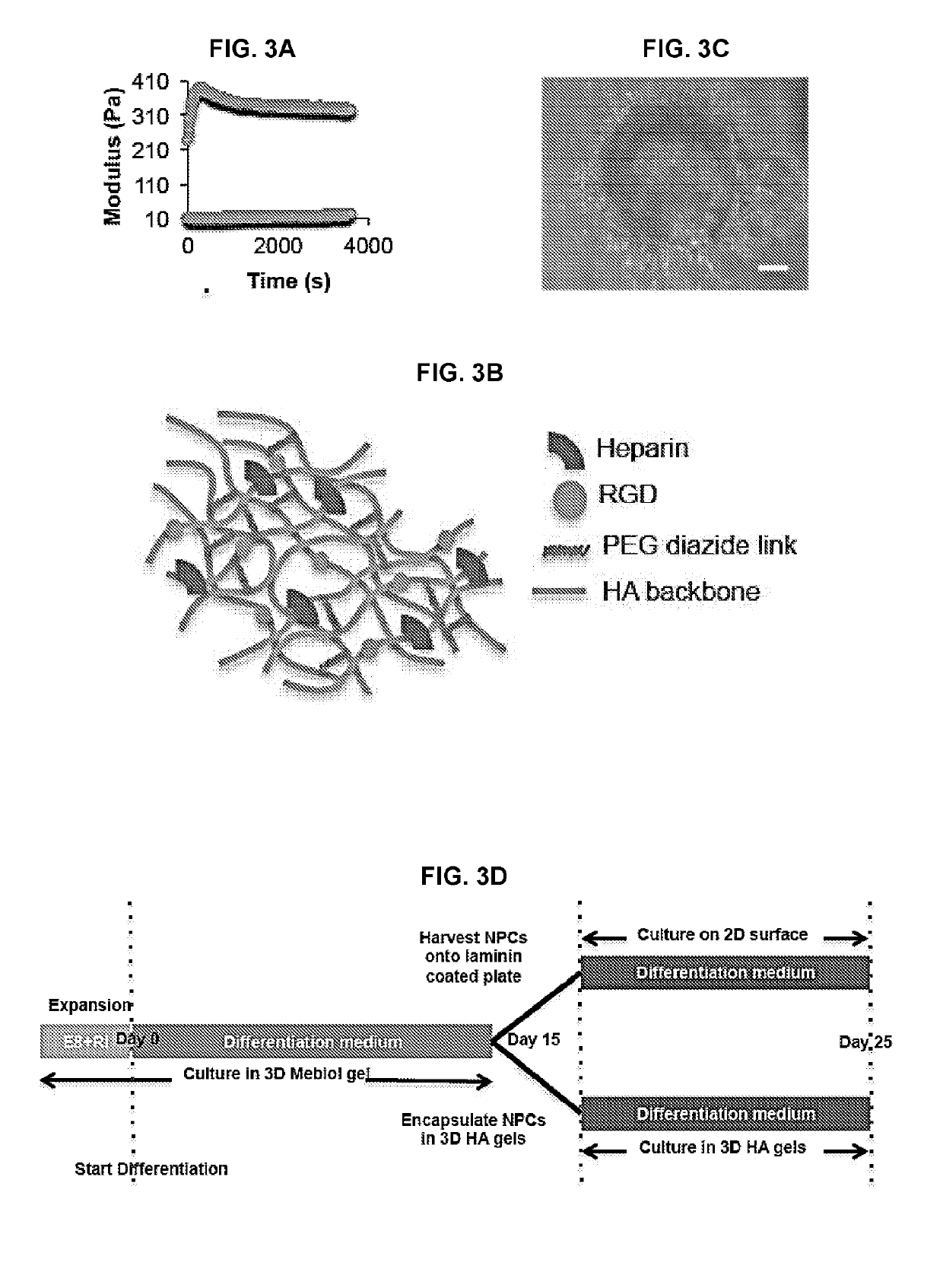Cellularized hydrogels and methods of using the same
a technology of hydrogels and hydrogels, applied in the field of cellularized hydrogels, can solve the problems of poor cell therapy treatment outcomes, clinical effectiveness hampered, and non-hematological diseases, and achieve the effect of effective transplantation
- Summary
- Abstract
- Description
- Claims
- Application Information
AI Technical Summary
Benefits of technology
Problems solved by technology
Method used
Image
Examples
example 1
ogenitor Differentiation and Transplantation within 3D Hyaluronic Acid (HA) Biomimetic Extracellular Matrix (ECM)
[0175]A HA-based hydrogel as described herein was designed as a functionalized biomimetic of the in vivo ECM for in vitro directed differentiation of human pluripotent stem cells (hPSCs) and as a vehicle for carrying cells for therapeutic transplantation into an animal host. As outlined in FIG. 1, the hydrogel comprises HA and heparin functionalized with the requisite peptides and / or proteins that confer biological activity. For instance, the gel can be functionalized with peptides containing an RGD motif that triggers neural cell adhesion, and ephrin-B1, which when presented in a multivalent fashion through HA conjugation, enhances neuronal differentiation. These components were cross-linked to generate a hydrogel of stiffness (i.e. elastic modulus) that is optimized for neuronal differentiation.
[0176]The hydrogel was employed to enhance neuronal lineage restriction and ...
example 2
els for Improved Post-Transplantation Survival of hPSC Derived Midbrain Dopaminergic (mDA) Neurons
Materials and Methods
[0182]The following materials and methods generally apply to the results presented in Example 2 except where noted otherwise. HA gel synthesis HA hydrogels were prepared using the Strain Promoted Azide Alkyne Cycloaddition (SPAAC) reaction to effect rapid crosslinking and gelation. First, Hyaluronic Acid (HA) was functionalized with dibenzocyclooctyne (DBCO) by reacting Sodium Hyaluronate (average molecular weight 75 kDa, Lifecore Biomedical) with DBCO-amine (Sigma-Aldrich). Briefly, 500 mg HA was dissolved at 1 mg / mL in 2-(N-Morpholino)ethanesulfonic acid (MES) buffer (50 mM, pH 4.0) and the carboxylic acid groups were activated by an equimolar amount of N-(3-Dimethylaminopropyl)-N′-ethylcarbodiimide (EDC) and N-hydroxysuccinide (NHS) for 1 h. DBCO-amine was dissolved in dimethylsulfoxide (DMSO) and 0.6 equivalents were added dropwise with stirring. After 48 h reac...
example 3
n Factors for Use in Cell Transplantation
Results
[0206]A major challenge facing efficient cell replacement therapy is ineffective dispersion of cells from the injection site post-transplantation. For example, in Parkinson's Disease, poor treatment outcome and undesirable side effects have been attributed to low levels of integration and localized graft hotspots resulting from ineffective dispersion of transplanted cells. To address this issue, hyaluronic acid (HA) based hydrogels functionalized with appropriate dispersion factors and modified to have physical properties that promote dispersion were developed to effectively transplant hydrogel-encapsulated neurons into the central nervous system.
[0207]In the instant example, a 3D biomaterial transplantation platform for increasing integration and dispersion of cells post-transplantation was designed and tested. Generally, the platform includes HA polymers cross-linked with a PEG linker. For added functionality and broad applicability,...
PUM
| Property | Measurement | Unit |
|---|---|---|
| Fraction | aaaaa | aaaaa |
| Fraction | aaaaa | aaaaa |
| Fraction | aaaaa | aaaaa |
Abstract
Description
Claims
Application Information
 Login to View More
Login to View More - R&D
- Intellectual Property
- Life Sciences
- Materials
- Tech Scout
- Unparalleled Data Quality
- Higher Quality Content
- 60% Fewer Hallucinations
Browse by: Latest US Patents, China's latest patents, Technical Efficacy Thesaurus, Application Domain, Technology Topic, Popular Technical Reports.
© 2025 PatSnap. All rights reserved.Legal|Privacy policy|Modern Slavery Act Transparency Statement|Sitemap|About US| Contact US: help@patsnap.com



